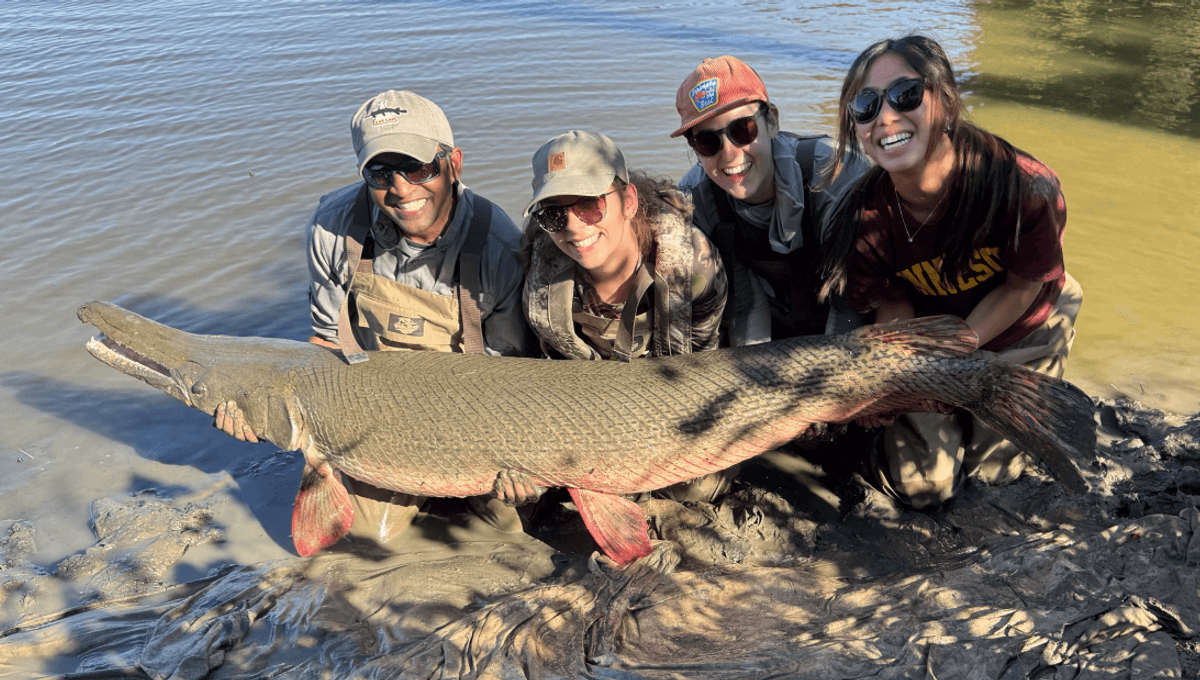-
Web sayfası bildirimcisi
- EXPLORE
-
Sayfalar
-
Blogs
-
Forums
“Behold The GARLIATH!”: Enormous “Living Fossil” Hauled From Mississippi Floodplains Stuns Scientists

“Behold The GARLIATH!”: Scientists Catch (And Release) An Enormous River Monster On Mississippi Floodplains
The Mississippi River floodplains are home to one of Earth’s most impressive river monsters: the alligator gar. Known to science as Atractosteus spatula, it is the largest of the gar species alive today and among the largest fish in North America.
The rest of this article is behind a paywall. Please sign in or subscribe to access the full content. Dr Solomon David, AKA “The Gar Guy”, has had more experience than most with these freshwater giants. So, when he messages you to say his team recently caught “the largest alligator gar I’ve encountered,” you pay attention – especially during #GarWeek. In a post shared on X, David shared pictures of the 240-centimeter (7-foot 10-inch) alligator gar in all its glory. At around 136 kilograms (300 pounds), it had the research boat tipping, but together the team were successfully able to capture, tag, and release it back into the wild. [QUOTES] The team were successfully able to capture, tag, and release the enormous alligator gar. Image courtesy of Dr Solomon David Gars are sort of like the poster child for “living fossils”. A living fossil is considered to be an animal alive today whose characteristics, or phenotype, reflect those of a species known only from the fossil record. It was a term coined by Charles Darwin in 1859, but one that’s been used in varied and unclear contexts ever since. In 2024, a study co-authored by David became the first to identify a biological mechanism that could explain why some animals remain seemingly frozen in time like this. In some living fossils, evolution really does occur at a drastically slower rate, and it means they can create viable hybrids with other species – even when they haven't shared a common ancestor since dinosaurs walked the Earth. Hybrids discovered between the alligator gar and longnose gar represent the offspring of genetically isolated groups whose last common ancestor existed 100 million years ago, making it the oldest identified parental split across animals, plants, and fungi. These hybrids are rare, but not unheard of. By a stroke of sweet serendipity, one of study co-author David’s graduate students – Kati Wright of Nicholls State University – actually caught one the same week as the above-mentioned living fossil paper's publication. The ancient splits of the alligator gar and longnose gar demonstrate the slow rate of evolution seen among gars – a group of primitive fishes that David says are often wrongfully considered "trash fish", and yet we stand to learn so much from them. It's thought they may have super-efficient DNA repair that could explain the low species diversity, and if so, could inform research into human health and cancer. So, a fascinating fish we can all agree, and if you’ve enjoyed this whopper, then why not meet one of its relatives: the spotted gar.
The alligator gar – a living fossil?
A record-breaking hybrid


